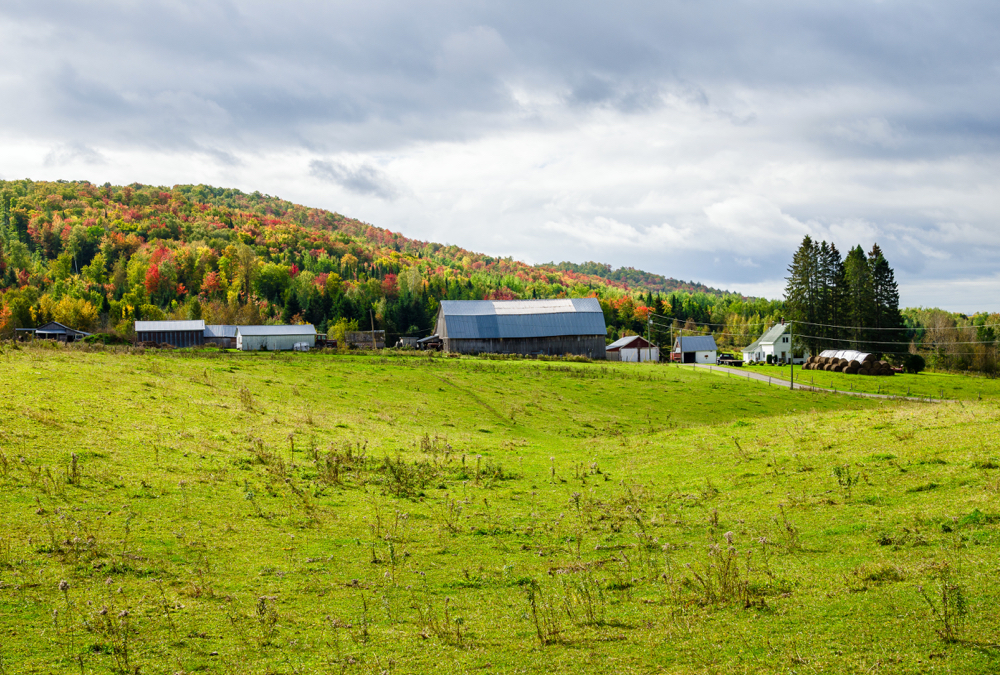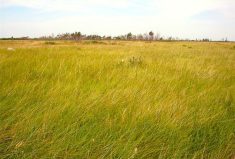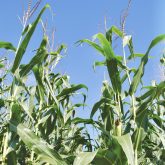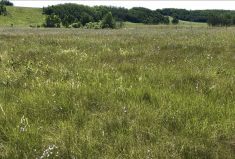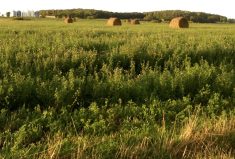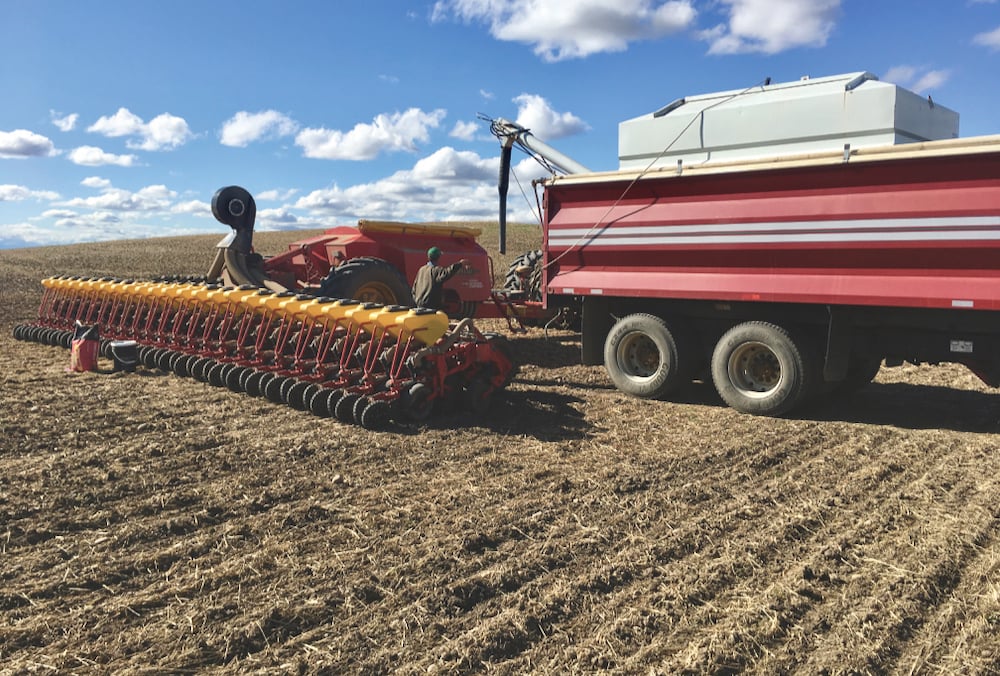As so often in farming, the advice on the best strategy for establishing tame pastures starts with “It depends.”
“When we’re talking about general establishment considerations for all uses, we really have to look at the soil type, the texture, soil pH and how rocky it is,” says Mike Witt, a farmer, professional hydrologist and certified crop advisor in British Columbia. “This will really drive a lot of the decisions we make going forward in terms of species and use of that land,” Witt said at the Canadian Forage and Grassland Association’s (CFGA) annual conference delivered online in November.
Other considerations include available moisture, rainfall per season, whether there is irrigation and how well the species are adapted to the region. Challenges such as drainage, low or high fertility, stoniness, weeds and pests should be dealt with before seeding.
Read Also

Producers aren’t panicking over tariffs and trade threats
The influence of tariff and trade uncertainity on farm business decisions.
“It’s easier to sort these out when you don’t have a stand that you’re worried about damaging or causing ruts in beforehand,” Witt said. “I really encourage producers to have a look at what issues they may run into, whether it’s putting in some drain tile or getting aggressive on perennial weeds. The time to do it is before it’s established.”
Other tips
When to seed: Witt recommends seeding in early spring or into the fall, adding he prefers to see enough growth in the fall to ensure the crown is formed and the plants will make it through the winter.
“I like to see six weeks there before freeze-up. That can be such a moving target in our (B.C.) interior. This year we had snow quite early, so the sooner the better given there’s enough moisture to get it going.”
Include a rotation: Producers should include a rotation when seeding arable land, but Witt acknowledged that might not be possible for rougher pasture land.
“But if a producer is set up to make silage or haylage, or even graze it off, I’d really like to see a cereal crop go in and just help break down some of that old sod. It gives a different group structure and different use to the soil, and it really gives it a bit of a break.”
Use a seed blend: While Witt recommends using a seed blend to provide diversity of growth and root structures and match variable ground, he said the exact blend depends on the intended uses of the crop and pasture.
“It’s really important to include legumes to add that nitrogen component to the pasture and help with the soil health and the longevity of it,” Witt said. “I really like to put together custom blends because I think that everyone’s needs are a little bit different.”
Use certified seed: This helps prevent bringing any new weeds onto the farm.
Advice for Eastern producers
Cedric MacLeod, a New Brunswick farmer, agrologist and CFGA’s executive director, offered similar advice for producers in Atlantic Canada. His key targets for forage establishment include setting soils up for a stand of four years or more and implementing a comprehensive weed-control strategy.
“We don’t have an opportunity to get back into the soil and correct the chemistry,” MacLeod said. “We’re not going to have a lot of options, especially in a mixed stand, to control the weeds, so making sure we’re getting set up in year one to take us the distance for four years or more is absolutely critical.”
MacLeod provided some rules of thumb for nutrient concentration goals in Maritime podzolic soils before planting a forage cover:
- 160 ppm for phosphorus with the phosphorus-to-aluminum saturation rate of 10 per cent.
- 170 ppm as a starting point for potassium.
- 20 to 25 ppm for sulphur.
- 2 ppm for boron.
- 10-to-1 calcium-to-magnesium ratio.
“Surface applications are okay to maintain that soil nutrient bank account balance because we’re going to get downward movement over time, but it’s hard if you’ve got depleted nutrient levels down deep in the profile to get a surface application down into that root zone,” MacLeod said. “So unless we take the time and effort to increase the bank account down to the rhizosphere, we’re likely going to minimize the long-term productivity of the stand.”
Get the weeds in the fall
Understanding the growth habit of weeds in the East is an important part of that comprehensive weed-control strategy. MacLeod said taking care of the weeds in the fall when they are dampening off and going into dormancy is the best strategy.
“They’re taking what they’ve got in that plant and taking it down to the root, and that carbohydrate is going to be the ‘gas’ in the spring that helps it come back alive,” he said. “So a fall application of herbicide will make sure that product gets into the root system and takes care of that gas tank.”
Spring is the other option, but since that is when plants are moving carbohydrate out of the root and into the above-ground biomass, herbicides won’t get deep down into the profile of the root system.
But MacLeod recommended not allowing excellence to be the enemy of good.
“We really need… a continuous improvement standpoint being the name of the game and building resilience. “As long as we’re getting better every year, making a concerted effort to be better every year and integrating some of these principles, I think that’s the best we can hope for.”
This article was originally published as a special supplement in the 2021 Forage & Grassland Guide.

